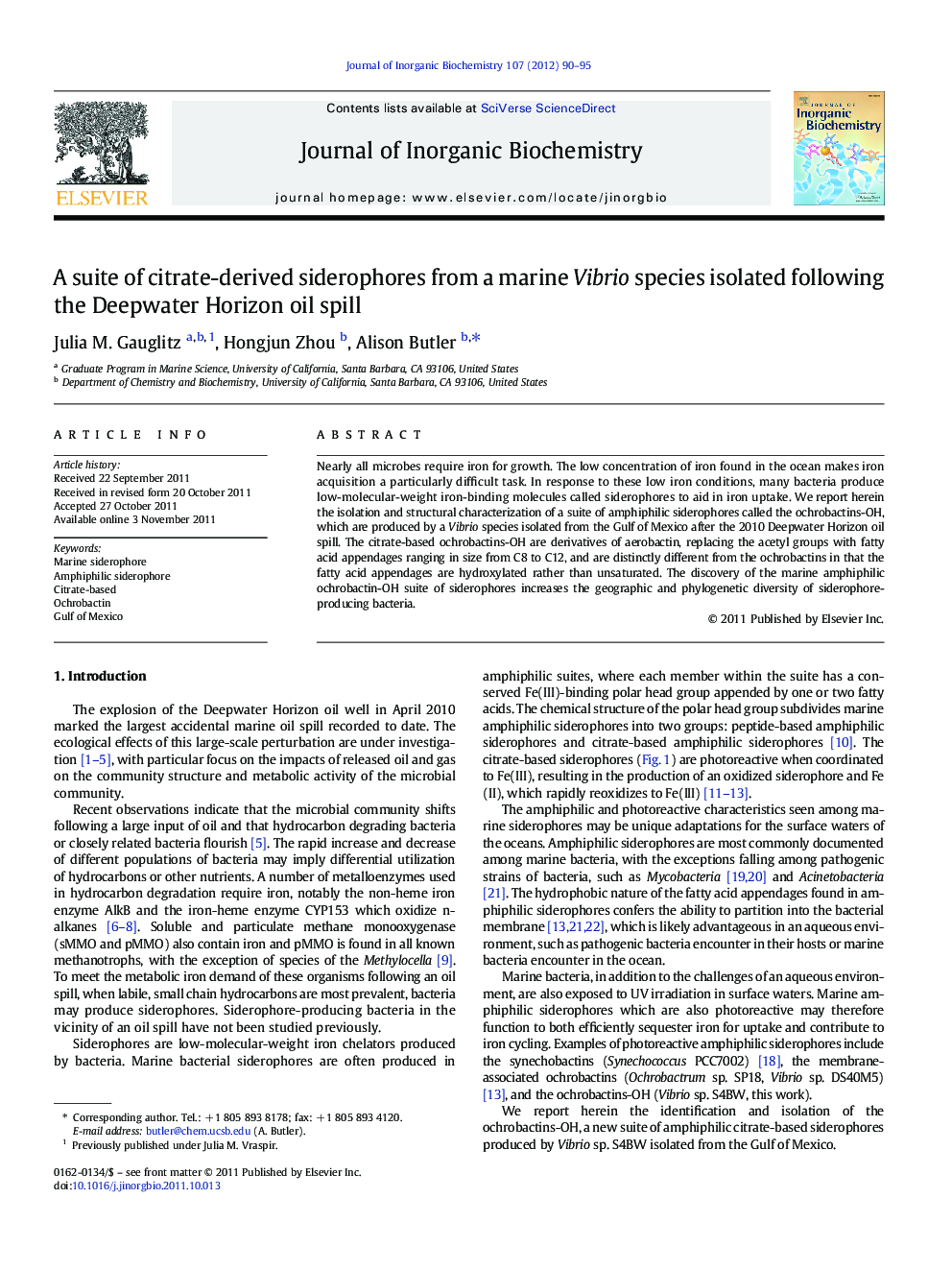| Article ID | Journal | Published Year | Pages | File Type |
|---|---|---|---|---|
| 1317834 | Journal of Inorganic Biochemistry | 2012 | 6 Pages |
Nearly all microbes require iron for growth. The low concentration of iron found in the ocean makes iron acquisition a particularly difficult task. In response to these low iron conditions, many bacteria produce low-molecular-weight iron-binding molecules called siderophores to aid in iron uptake. We report herein the isolation and structural characterization of a suite of amphiphilic siderophores called the ochrobactins-OH, which are produced by a Vibrio species isolated from the Gulf of Mexico after the 2010 Deepwater Horizon oil spill. The citrate-based ochrobactins-OH are derivatives of aerobactin, replacing the acetyl groups with fatty acid appendages ranging in size from C8 to C12, and are distinctly different from the ochrobactins in that the fatty acid appendages are hydroxylated rather than unsaturated. The discovery of the marine amphiphilic ochrobactin-OH suite of siderophores increases the geographic and phylogenetic diversity of siderophore-producing bacteria.
Graphical abstractThe ochrobactin-OH siderophores produced by a marine Vibrio sp. S4BW isolated in the vicinity of the Deepwater Horizon oil spill.Figure optionsDownload full-size imageDownload as PowerPoint slideHighlights► Marine Vibrio associated with Deepwater Horizon oil spill. ► Citrate-derived siderophores for microbial iron acquisition. ► Suites of amphiphiles. ► Dual 3-hydroxyfatty acid appendages (C8–C12).
